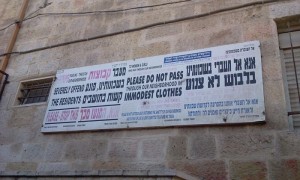The Meah Shearim neighborhood in Jerusalem is considered to be one of the must-see places in order to get the full picture of the multicultural landscape of the city. Yet going there needs preparations: first of all, one must be “modestly dressed”, moreover, it is good to know at least a few basic things about the culture in this neighborhood.
It is one of the oldest Jewish neighborhoods in modern Jerusalem, so in many ways the lifestyle there was not recreated or constructed, but in a large part kept due to the existence of its residents as a closed cultural enclave. Orthodox Jews who lived in the territory of contemporary Israel before the state was founded were given special rights and promises so that they do not oppose the founding of the state too much. In their beliefs, a Jewish state cannot be founded before the Messiah comes. The state financially supports this community, and its members are exempted form the otherwise universal military service. A recent attempt to draft members of the Orthodox community, or the haredim, to the army have been met with resistance. In this photo residents of the neighborhood read a poster, written in a scandalistic tabloid-like manner, about the plans of the state to draft them.
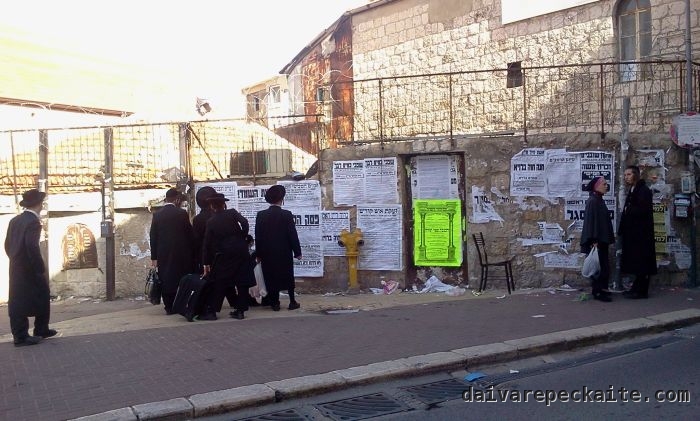
These posters, called pashkvilim, substitute newspapers. According to my friend Jordan, who is an expert in Yiddish, they originated in 15th century Venice. In Europe they mostly died out with the advent of newspapers but they became very popular in Israel. Many tourists have found them in Yiddish, which is often spoken in these ultra-Orthodox communities, but what my friend and I saw was only in Hebrew. People spoke those languages interchangeably though.
The neighborhood greets tourists with a warning.
I have never seen anything like this anywhere in the world – not “please respect…” or something, but “severely offends its residents”. This is something to know and observe. After all, it’s tourists who come out of curiosity and go without a trace, whereas the residents have to live there every day. They have every right to be annoyed that people come to look at them as if they were Disneyland characters or animals in a zoo. It was very tempting to document their strange outfits and challenging to protect their privacy while doing so.
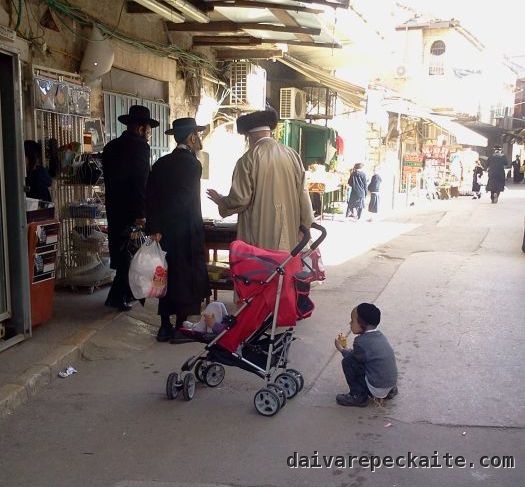
Why exactly are they dressed like this? People living in Meah Shearim represent various branches of Judaism, but they are united by the fact that they are all the haredim, or the anxious. They are so afraid to misinterpret the Bible and be punished for it that they take extra steps and try to perfect every step they take. For Hassidic haredim, one of these daily duties is dressing like the founder of their specific branch. This might mean wearing a fur hat in the middle of a Middle Eastern winter. Traditionally a boy is considered to be an adult with all resulting duties since he is 13, but in this community many little children, as young as seven or so, were already dressed in a religious way. We could see many children walking around without any supervision. Little boys were walking around trying to curl their sidelocks between their fingers, but this only left their long strands of hair greasy. There are too many children to watch over. Ultra-Orthodox families tend to have many children, as couples marry early, often in arranged marriages, and having many offspring is considered to be a blessing. Of course, the weight of it falls on the women, who look exhausted from life at the age of 30 or so.
Unlike men’s clothes, the requirements for which are positively defined (to follow the leader), women’s clothing is regulated by a series of restrictions. Single women must tie their hair, married women must hide their hair altogether. All women must wear long skirts. If you thought this is a hijab shop somewhere in Europe, look again:
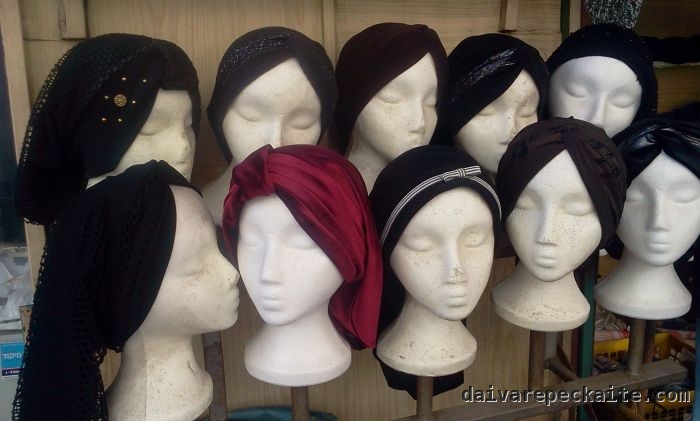
While men are busy studying religious scripts (most of them do not work and get paid for studying religious scripts), women toil taking care of the house, giving birth to lots of children and sometimes working or managing small businesses. In some ways they have more choice, but at the same time their lifestyle looks tiring and perhaps less rewarding than men’s. The fact that theharedim live off welfare angers many secular Israelis.
On the other hand, the haredim are not exactly swimming in rivers of gold. Because their families are very large and income very limited, many of them live in poverty and in poor quality housing.

Regardless of this, they seem to really like popcorn 🙂
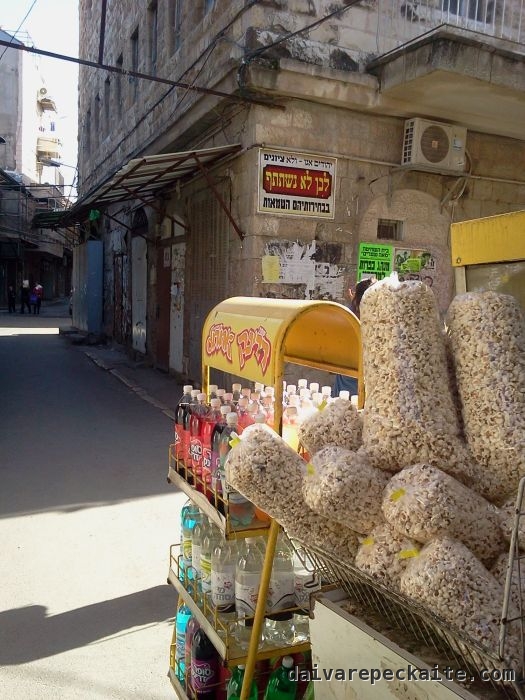
… and lottery:
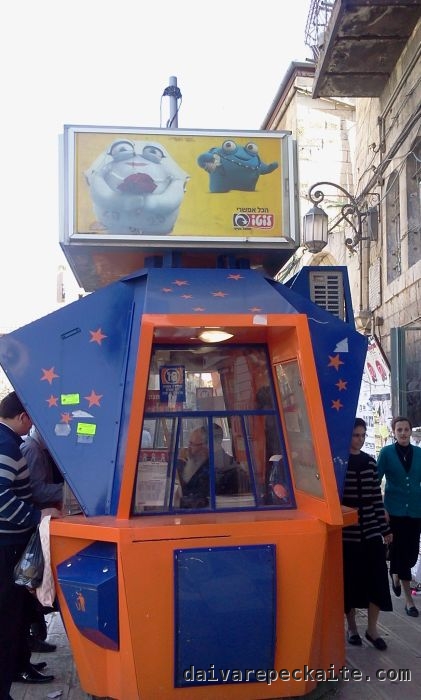
Going there feels like indeed taking a time machine to the 18th century. Other tourists have received angry looks, and I have heard stories of people having stones and used diapers thrown at them for taking photos or not looking ‘modest’. Yet my friend and I had no trouble whatsoever. We were modestly dressed and did not stick our cameras into people’s faces. ‘Modest’ behavior pays off, at least in terms of safety. Finally, Meah Shearim is a good experience for those who do not find Tel Aviv exotic enough. After the visit there, it felt very relaxing to return to the secular, indifferent and modern Tel Aviv.


